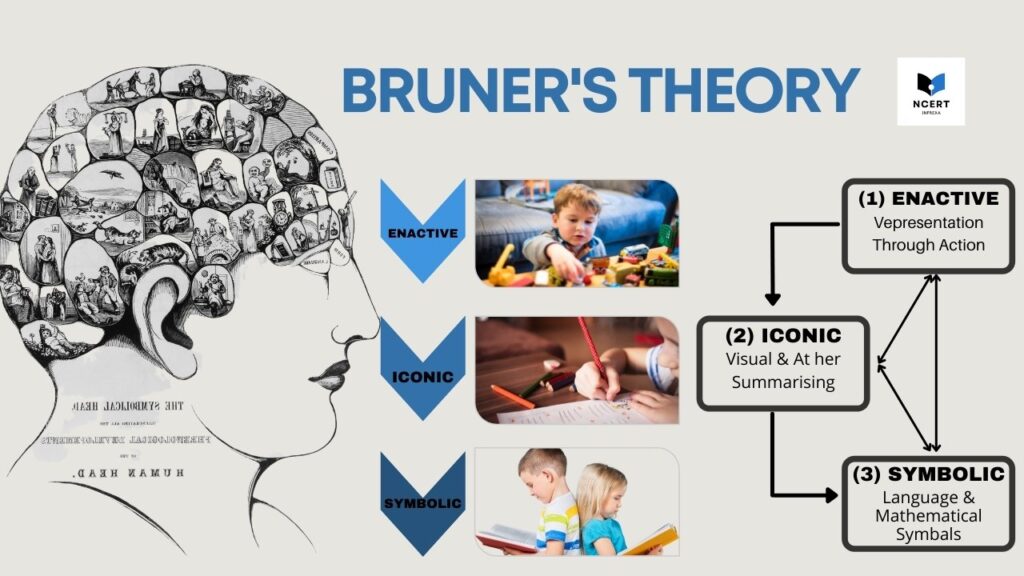Jerome Bruner’s theory plays a crucial role in understanding how students learn. His principles, also known as the Theory of Learning, focus on how students acquire knowledge through different stages.
Bruner (1915-2016) was an influential American psychologist whose work has left a lasting impact on educational psychology. In this article, we’ll explore the key elements of Bruner’s cognitive development theory, while also considering how it intersects with other notable theories.
What is Bruner’s Theory of Cognitive Development?
Bruner’s theory of learning is based on three key elements that he believed should be included in the education system to enhance learning in the classroom:
- Enactive Stage: This is action-based learning, where students understand objects through actions and reactions, forming memories and characteristics based on their interactions. For example, a child may explore a toy by putting it in their mouth or examining it by rotating it. This stage is most active in children aged 0 to 3 years.
- Iconic Stage: In this stage, children start to absorb the characteristics of objects based on their size, color, and other features. This type of learning, prevalent between the ages of 3 to 7 years, is more about visual representation than physical interaction. This aligns with Chomsky’s Theory of Language Development, where children begin to understand and internalize language structures by observing and hearing.
- Symbolic Stage: At this stage, students begin to understand symbols and abstract concepts. They start to learn through language and other symbols, such as understanding the concept of a lion by associating it with a picture or a word. This stage supports learning through lectures and other forms of symbolic communication. Bruner’s approach also connects with Kohlberg’s Theory of Moral Development, where abstract thinking and reasoning play a significant role in moral decision-making.
Features
- Prior Knowledge: Bruner emphasizes the importance of building on students’ existing knowledge.
- Reinforcement: The theory also highlights the role of rewards and punishments in learning.
- Natural Development: Students learn and understand concepts naturally, using their prior knowledge.
- Discovery Learning: Bruner’s theory encourages students to discover new information by building on what they already know.
- Progression from Known to Unknown: Learning should progress from familiar concepts to new and unfamiliar ones.
Importance
Bruner’s theory is significant because it values students’ prior knowledge and supports logical thinking. It encourages creativity and problem-solving skills by allowing students to draw conclusions through their own experiences.
Bruner’s Theory and Vygotsky’s Theory
Bruner’s theory shares similarities with Vygotsky’s Theory in emphasizing the social environment’s importance for learning. Both theories recognize that students learn through observation and imitation and require proper guidance to complete the learning process.




